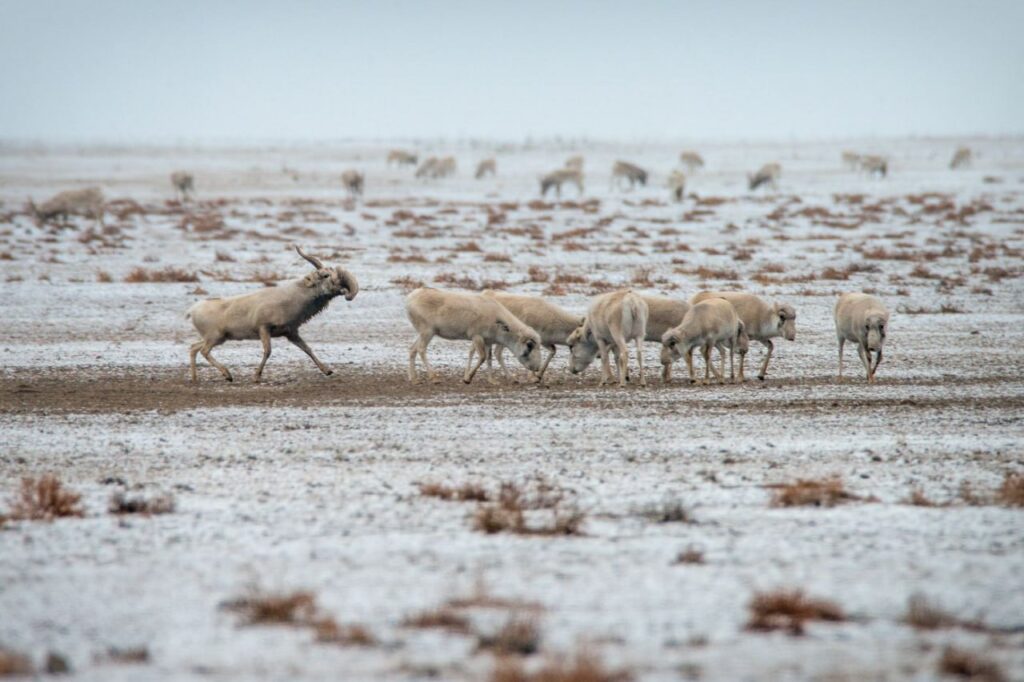Residents of Central Kazakhstan Village Arrested For Trying To Halt Saiga Killings
The shooting of saiga antelopes has resumed in Kazakhstan, which has angered many in the country, including residents of a village in the central Ulytau region, Kyzylzhar. According to the Interior Ministry, on January 10 a group of Kyzylzhar residents deliberately prevented hunters from a company called Okhotzooprom from shooting the saigas. The persons were arrested and are currently in custody. According to local ecologist Almasbek Sadyrbayev, the female saigas were carrying calves. The local authorities have pointed out that the saiga shootings were carried out lawfully, and that the villagers used physical force against Okhotzooprom staff. Andrei Kim, deputy chairman of the Ministry of Ecology’s forestry and wildlife committee, confirmed at a press conference that the moratorium on saiga shooting in Kazakhstan, in force until 2024, will not be extended. However, saigas have been introduced to western Kazakhstan as part of a program to regulate their population. Commercial hunting will continue until February 29.



